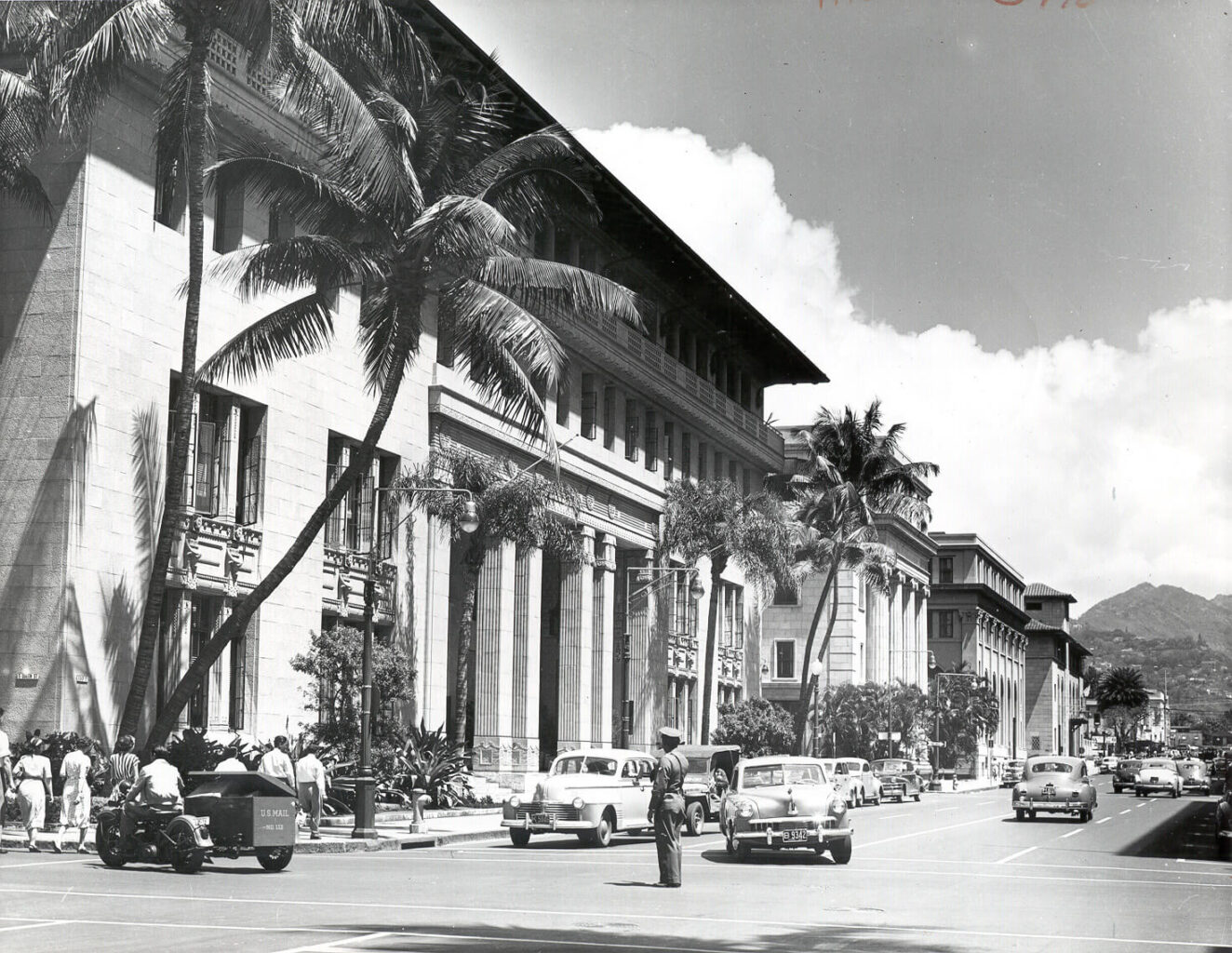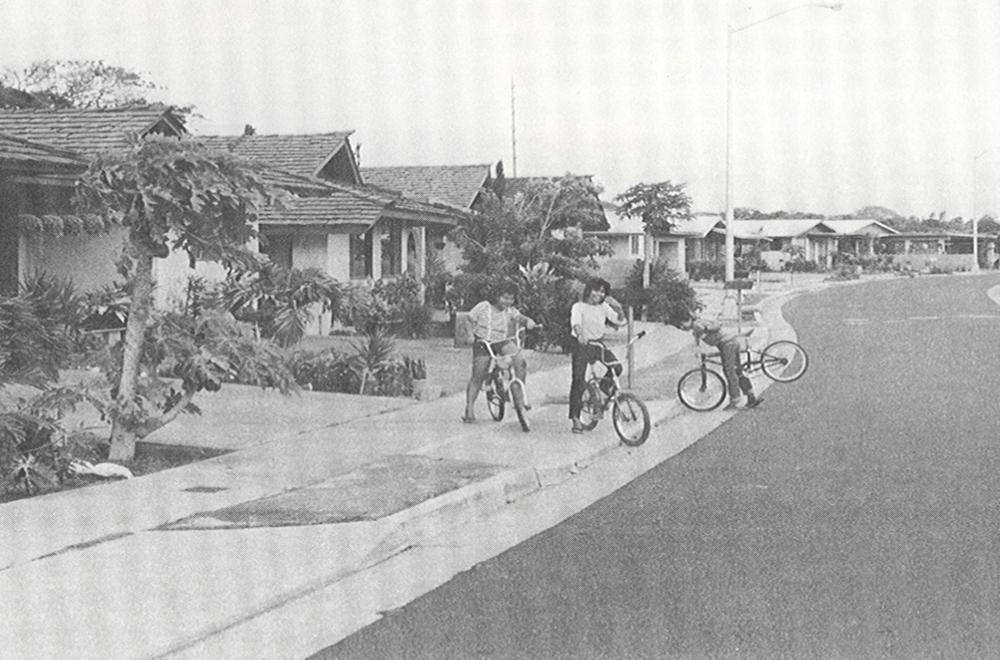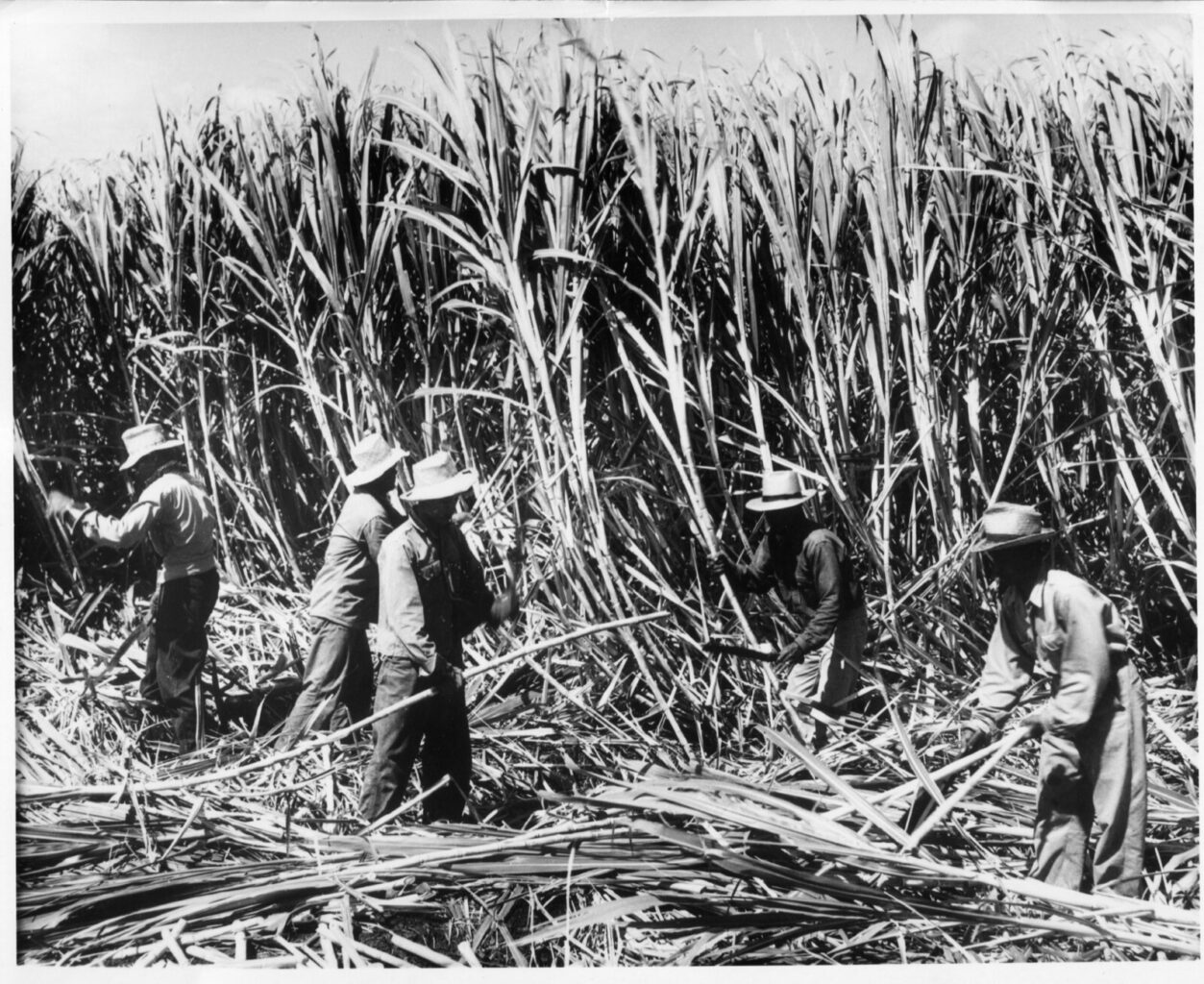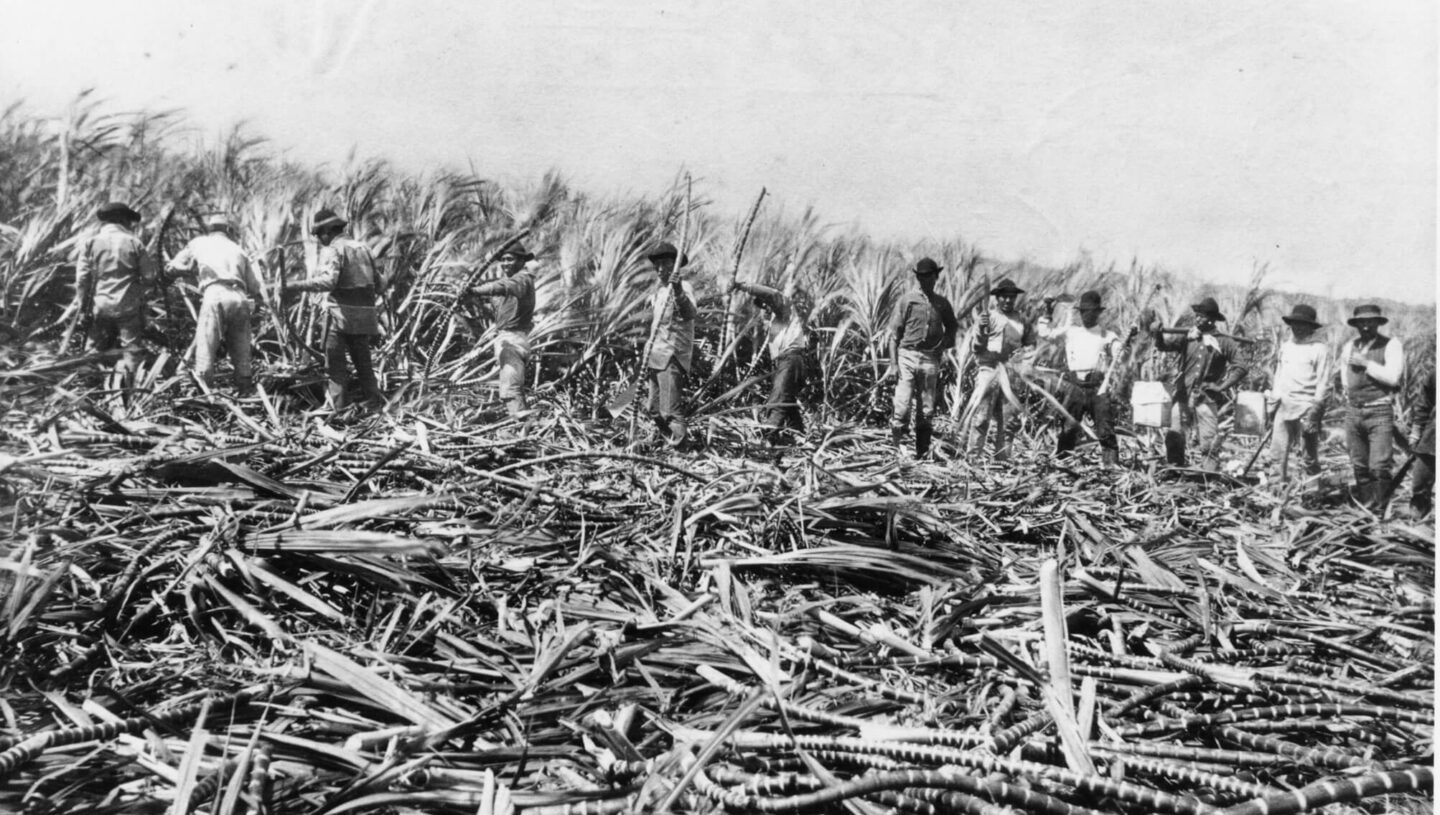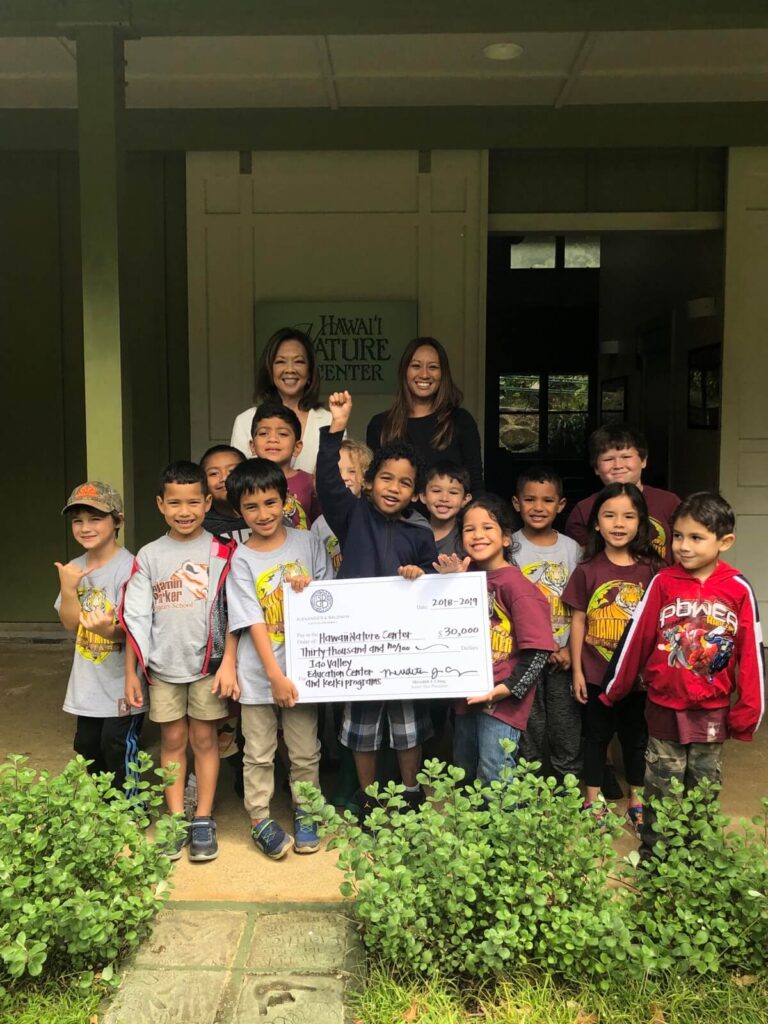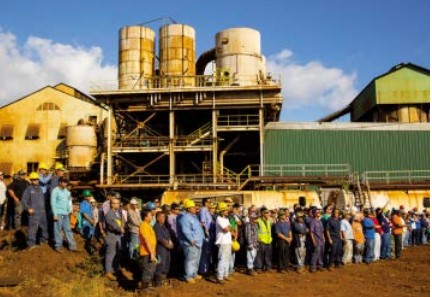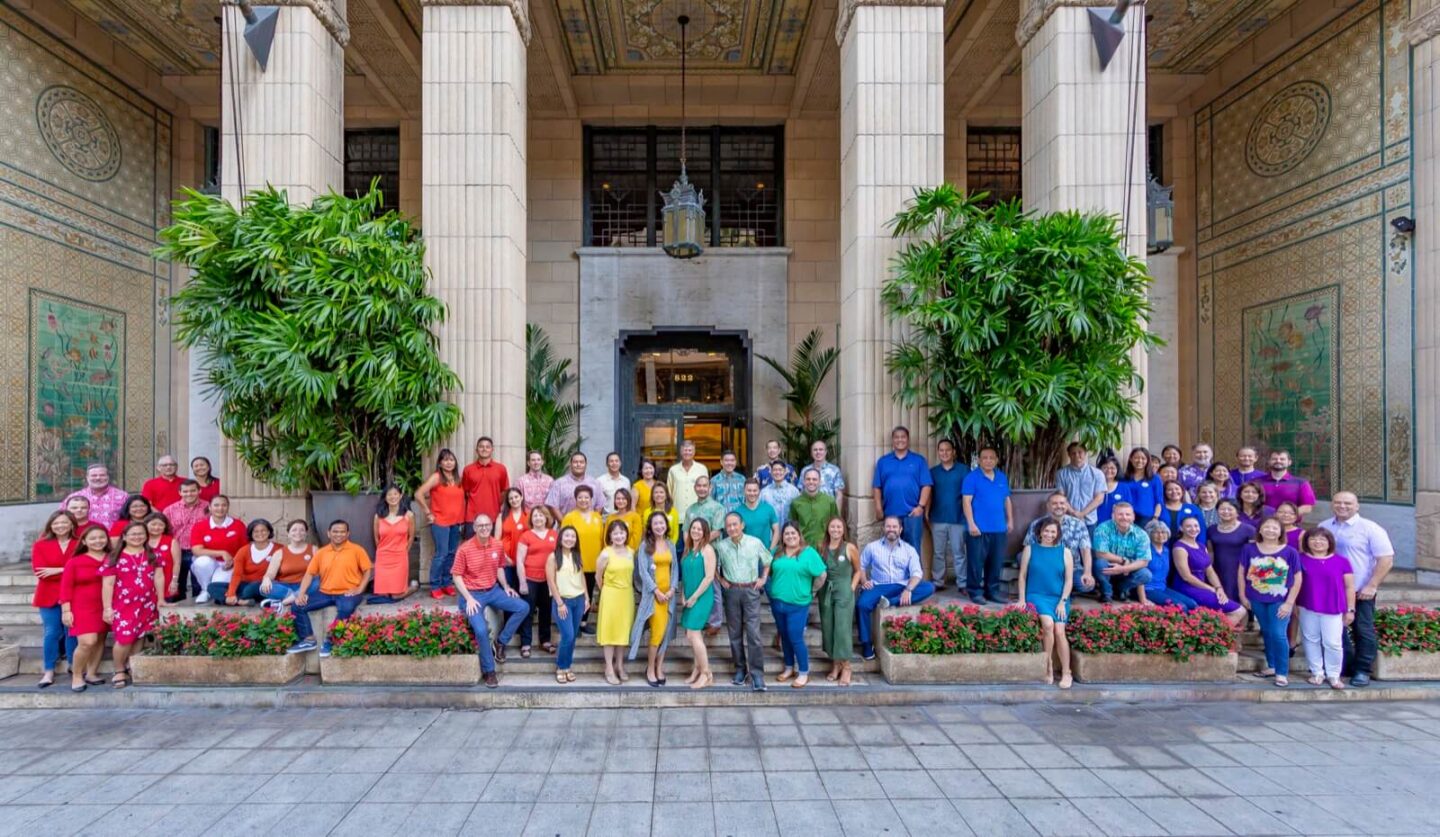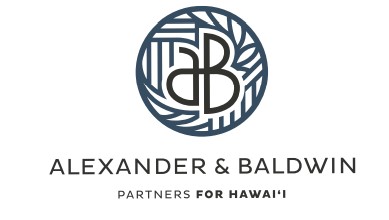
Alexander & Baldwin has deep roots in Hawaii, from its beginnings in the plantation era to new opportunities in real estate and development. What began as a partnership between two young men has evolved over more than a century to our current role as Partners for Hawaii.

Partners plant their first crop of sugar, commit to factory. Start of Hamakua Ditch.
A Legacy of Friendship, Collaboration
Friends since boyhood, Samuel T. Alexander and Henry P. Baldwin established a sugar-growing partnership on Maui that would diversify and grow to become one of Hawaii’s business and community leaders. The legacy they forged in 1870 continues today through A&B’s vision, mission and values.
Alexander & Baldwin Building is completed in downtown Honolulu.
Diversity Under One Roof
The historic Alexander & Baldwin Building is a study of diversity and ingenuity brought together in a complementary whole. It is distinguished by subtle Chinese motifs as well as Mediterranean, Italian Renaissance, Buddhist, Tibetan, Japanese and Hawaiian elements and ornamentation, and it remains one of the most attractive buildings in Hawaii. Designed to suit its tropical climate and geography, it was built with some of the finest materials at the time and featured innovative plumbing and ventilation systems. Careful repairs, refurbishment and system upgrades in recent years have transformed the 90-year- old building into a modern and efficient workplace while retaining its timeless grace.
A&B gives up interest in Maui Pine; ends pineapple business.
Building Communities
Over the last seven decades A&B has opened doors to home ownership across the Islands, starting in Kahului, Maui, where two sons of Henry Baldwin envisioned a modern, master-planned community of homes, businesses, schools and recreational facilities so that company employees and others could share in the American dream of owning a house. The first residents moved into this “Dream City” in 1950. Building upon its success, A&B has completed residential projects small and large, from
Kauai to Hawaii Island; developed the expansive master-planned communities of Wailea and Kukui‘ula; and proven its expertise in building high-rise residential condominiums in Honolulu.
Development of Wailea begins on lands purchased by Matson in 1957.
Seeds of Growth
Rarely has an industry so shaped and influenced a place as the sugar industry did in Hawaii for more than 200 years. Hawaiian Commercial & Sugar Company (HC&S) was a significant force in the industry and in Maui’s economy over its entire life span. It was known to be an innovator in the industry. The company was one of Maui’s largest employers and the state’s last remaining sugar business when its Puunene Mill closed in 2016, marking the end of an era.
A&B enters macadamia nut business with ceremonial planting of two trees at McBryde on Kauai.
Plantation Life: Cultivation of Diversity
The islands’ sugar industry was like no other in cultivating the extraordinary cultural diversity that Hawaii has enjoyed for generations. As waves of immigrants arrived from such distant lands as China, Japan, Korea, Portugal, Puerto Rico and the Philippines to work on sugar plantations and forge a better life, they contributed to the rich melting pot of foods, traditions and language that make up the fabric of island life today.
Hurricane Iniki slams the island of Kauai on September 11, impacting many A&B employees and other residents. Except for the crops in the field, most of A&B’s operations were spared or properly insured. Matson and A&B’s Kauai Commercial Co. trucking subsidiary played a significant role in transporting relief supplies. A&B’s 580 acres of macadamia orchards were lost to the high winds
A&B purchases its first property for development on the island of Oahu, paying $8 million for a 40-acre industrial-zoned property in Waipahu.
From Stream to Field
Dating back to 1878, East Maui Irrigation Company’s 74-mile system of ditches, tunnels, siphons and flumes was an engineering masterpiece that shaped irrigation projects in Hawaii and the western United States. Water collected from East Maui’s watershed sustained HC&S sugarcane fields for decades and continues to supply water to Upcountry Maui residents and farms through deliveries to Maui’s Department of
Water Supply. EMI’s pioneering role was recognized in 2002 when its ingenious system was designated a National Historic Civil Engineering Landmark
Matson launches new eastbound service, “China-Long Beach Express,” with four fast, efficient new ships.
Lifeline to the Islands
Beginning with the voyage of its first ship in 1882, Matson Navigation Company has provided a vital lifeline to Hawaii, carrying cargo between the islands, the U.S. mainland and ports in the Pacific and Asia. The company led the way in maritime innovation, including the introduction of containerization in the Pacific. Through the mid-1900s, Matson played a significant role in Hawaii’s growing tourism industry, building four passenger liners and four Waikiki hotels that catered to a growing market of travelers. Matson vessels were called into military service during World War I and II, carrying thousands of troops across the globe. After owning an interest in the company for nearly six decades, A&B acquired 100% interest in Matson in 1969, which remained an A&B subsidiary until the two companies separated in 2012
A&B makes the long-term strategic decision to refocus its commercial portfolio back to Hawaii.
Kukui‘ula debuts its 18-hole, Tom Weiskopf-signature golf course, $100 million clubhouse, spa and other amenities.
Massimo Zanetti Beverage, USA, the owner of Hills Bros., acquires the Kauai Coffee assets and leases the coffee plantation land.
A Culture of Sharing
From our founders’ humble beginnings in 1870, A&B has forged a lasting legacy of charitable giving that is perpetuated by the successful activities of our businesses
and the generosity of our employees. This culture of sharing is rooted in our mission and values as a kama‘aina company; we have both a responsibility to sustain and an opportunity to help shape the communities we serve. Nearly five decades ago, A&B’s board of directors made a commitment to dedicate a portion of the company’s pre-tax income for charitable gifts.
A&B acquires the Hawaii portfolio of the Kaneohe Ranch/Harold K.L. Castle Foundation for $373 million. The portfolio includes 386,000 square feet of prime retail and light industrial space in the heart of Kailua.
A&B acquires Pearl Highlands Center, Waianae Mall and Napili Plaza.
A&B acquires 30 properties for $130 million located on Kahala Avenue in an off-market transaction. On October 1,A&B acquires Grace Pacific, Hawaii’s premier natural materials and paving company.
A&B completes construction of Waihonua high-rise condominium.
A&B announces the cessation of sugar operations at HC&S, the last sugar cane plantation in the state, and the transition to diversified agriculture. Throughout the year, the stories and photos of the people who brought in this historic crop were captured in Cane – Hawaii’s Last Sugar Harvest, a documentation and tribute to the industry and the HC&S employees.
A&B converts to a real estate investment trust (REIT) and undertakes a comprehensive rebranding effort to provide clarity to its stakeholders. Adopts the new tagline “Partners for Hawai‘i” to reflect not only our focus on Hawai‘i, but our intent to work with local communities to achieve our mutual goals. The new logo was inspired by the motifs of A&B’s historic building’s architecture, the crest represents strength in history and solidarity through change.
A&B enters 50th year of offering scholarships to children of employees and retirees.
Partners for Hawai‘i
A&B’s 150-year history traces an extraordinary evolution, growing from a partnership that cultivated Hawaii’s land into a diversified company that became one of America’s leaders in agriculture, ocean transportation, and land stewardship and development. Today, as a real estate investment trust and Partners for Hawai‘i, A&B is committed to utilizing its long history, deep relationships and extensive resources to improve Hawaii’s communities and create value for all of our stakeholders. By embracing innovation, like our founders, we will transform our organization and make it more effective in addressing new challenges and opportunities in an ever-changing business environment.


